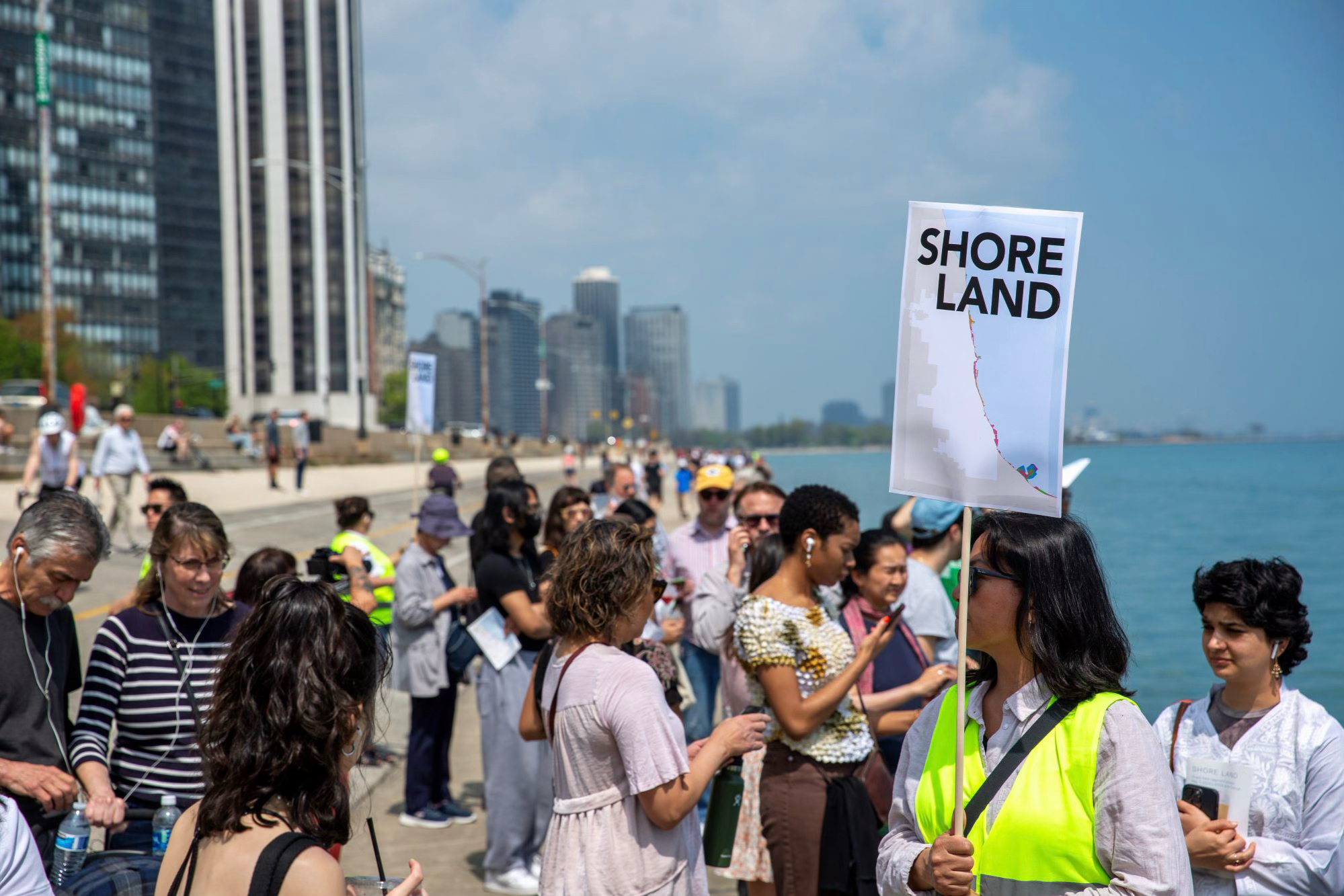From the first years of white settlement in Chicago, the shore of Lake Michigan has been highly engineered. Legislation, lawsuits, planning, and construction have created today’s lakefront, with more than 5.5 square miles of lakefill stretching across 30 miles of shoreline. Much of this land is publicly accessible green space won over decades by advocates inspired by Daniel Burnham’s 1909 Plan of Chicago. Often described as visionary and enlightened, the plan was also designed to reduce labor conflict by providing recreational outlets for working class anger. Today’s concerns center on extending public access along the remaining privately owned sections, as well as addressing erosion and the effects of climate change on lake levels.
Yet this lakefront technically does not belong to the city, or to the public. As the Pokagon Band of Potawatomi insisted in a 1914 lawsuit, this “made land” extends beyond the 1833 Treaty of Chicago boundary for cessions: the shoreline at the time of signing. What does it mean that this much-vaunted public lakefront was born from an elitist vision of urban control and breaks treaty law by its existence?
Shore Land is a sound walk that contemplates the lakefront as a liminal space between land and water, simultaneously a public good, treaty violation, and strategy to suppress insurgence. The sound walk narratives contrast modes of settler engineering (social, legal, material) with Indigenous perspectives on the sovereignty of land and water. Six audio tracks corresponding to six points along the lakefront weave together interviews, laws, treaties, stories, and songs in English, Potawatomi, and Korean.
Credits
Sound engineering by Troy Cruz. This work is a part of Navigations, a series of artist projects shared and realized in public/common space sponsored by Roman Susan Art Foundation. This work is also supported by the Awesome Foundation (Chicago chapter), the Puffin Foundation, and the Individual Artist Program of the Chicago Department of Cultural Affairs and Special Events.
Hosted by: Roman Susan Art Foundation



I’m very honored to be on the shortlist for this year. Thank you so much for considering this piece.